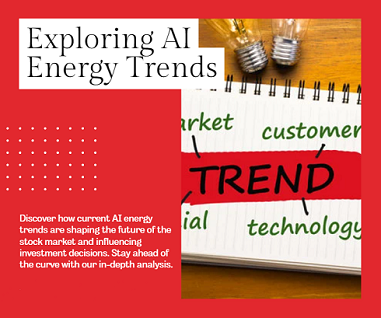20 Good Ways For Choosing Best Ai Etf Websites
20 Good Ways For Choosing Best Ai Etf Websites
Blog Article
Top 10 Tips On Assessing The Ai And Machine Learning Models Of Ai Platform For Analyzing And Predicting Trading Stocks
The AI and machine (ML) model used by the stock trading platforms as well as prediction platforms need to be evaluated to make sure that the information they provide are precise, reliable, relevant, and practical. Poorly designed or overhyped models can lead flawed predictions, or even financial losses. Here are ten of the most effective tips to help you evaluate the AI/ML models of these platforms.
1. Understanding the model's purpose and method of operation
Clear objective: Determine if the model is designed for short-term trading, longer-term investment, sentiment analysis or for risk management.
Algorithm disclosure: Check whether the platform is transparent about the algorithms it employs (e.g. neural networks and reinforcement learning).
Customization - See whether you can modify the model to fit your strategy for trading and your risk tolerance.
2. Review the model's performance using by analyzing the metrics
Accuracy Test the model's predictive accuracy. Don't solely rely on this measurement, however, because it can be inaccurate.
Precision and recall. Evaluate whether the model is able to accurately predict price fluctuations and minimizes false positives.
Risk-adjusted gains: Determine whether the assumptions of the model lead to profitable transactions after accounting for risk.
3. Test the Model by Backtesting it
Backtesting your model with the data from the past allows you to evaluate its performance against previous market conditions.
Test the model on data that it has not been trained on. This can help stop overfitting.
Scenario analysis: Examine the model's performance under various market scenarios (e.g. bull markets, bear markets, high volatility).
4. Check for Overfitting
Overfitting signs: Look for models that have been overfitted. These are models that perform extremely good on training data but poor on data that is not observed.
Regularization techniques: Check whether the platform uses methods like normalization of L1/L2 or dropout to stop overfitting.
Cross-validation: Ensure the platform is using cross-validation to determine the generalizability of the model.
5. Review Feature Engineering
Important features: Make sure that the model is based on important features (e.g. price, volume and technical indicators).
Feature selection: Ensure the application chooses features that are statistically significant, and do not include irrelevant or redundant data.
Updates to features that are dynamic: Determine whether the model will be able to adjust to changing market conditions or to new features as time passes.
6. Evaluate Model Explainability
Interpretation: Make sure the model provides clear explanations for its predictions (e.g. SHAP values, the importance of features).
Black-box models cannot be explained Be wary of software with complex algorithms including deep neural networks.
User-friendly insights: Check if the platform provides actionable insights in a form that traders can comprehend and use.
7. Assessing the model Adaptability
Changes in the market: Check whether the model is able to adapt to market conditions that change (e.g. changes in regulations, economic shifts, or black swan-related occasions).
Continuous learning: Determine whether the platform is continuously updating the model with new information. This can boost performance.
Feedback loops: Make sure your platform incorporates feedback from users as well as real-world results to refine the model.
8. Be sure to look for Bias and fairness
Data bias: Make sure the data used for training is a true representation of the market and without biases.
Model bias: Determine if you are able to actively detect and reduce biases that exist in the forecasts of the model.
Fairness - Ensure that the model isn't biased in favor of or against specific sector or stocks.
9. Calculate Computational Efficient
Speed: Check whether the model can make predictions in real-time or at a low latency. This is particularly important for traders who trade high-frequency.
Scalability: Determine whether the platform is able to handle large datasets and multiple users without affecting performance.
Utilization of resources: Ensure that the model is designed to make optimal use of computational resources (e.g. GPU/TPU usage).
10. Transparency and accountability
Model documentation: Ensure the platform has a detailed description of the model's structure as well as the training process and the limitations.
Third-party validation: Find out if the model was independently validated or audited by a third person.
Make sure that the platform is fitted with mechanisms to detect the presence of model errors or failures.
Bonus Tips
User reviews: Conduct user research and conduct cases studies to evaluate the effectiveness of a model in actual life.
Trial period - Use the demo or trial for free to test out the models and their predictions.
Customer support: Check whether the platform offers solid customer support that can help solve any product-related or technical issues.
Use these guidelines to evaluate AI and ML stock prediction models, ensuring that they are reliable and clear, and that they are compatible with trading goals. See the top rated more hints for trade ai for more advice including ai investing, stock analysis app, best artificial intelligence stocks, ai for stock trading, chatgpt copyright, stocks ai, chatgpt copyright, stock analysis tool, ai trading software, best ai stock trading bot free and more.
Top 10 Tips For Assessing The Scalability Ai Software For Predicting And Analysing Trading Platforms
Scalability is an important element in determining whether AI-driven platforms for stock prediction and trading are able to handle growing demand from users, increasing markets and data volumes. Here are the top 10 suggestions to evaluate scalability:
1. Evaluate Data Handling Capacity
Tip: Make sure the platform you're considering is able to handle and process large amounts of data.
Why: Scalable systems must handle data volumes that are growing without performance degradation.
2. Test Real Time Processing Capabilities
TIP: Examine how the platform processes real-time data streams, such as live stock prices, or breaking news.
Why? Real-time trading decisions require real-time analysis of data. Delays could lead to lost opportunities.
3. Cloud Infrastructure and Elasticity Cloud Infrastructure and Elasticity: Take a look
Tip. Check if the platform uses cloud-based infrastructure like AWS, Google Cloud and Azure, which can increase the capacity of resources as needed.
Cloud-based platforms are a great way to gain flexibility. They allow the system to be scaled up and down according to the need.
4. Algorithm Efficiency
Tip 1: Examine the computational efficiency of the AI models used (e.g. reinforcement learning deep learning, reinforcement learning).
The reason: Complex algorithms are resource-intensive. Optimizing them is the key to scaling.
5. Examine parallel processing and distributed computing
Verify if your platform is using parallel processing or distributed computing (e.g. Apache Spark, Hadoop).
The reason: These advanced technologies provide faster data analysis and processing on multiple nodes.
Examine API Integration. API Integration.
Tips Try to test the platform's capacity to integrate with external APIs (e.g. brokers, market data providers, APIs).
Why: The platform can adapt to the changing requirements of market conditions and data sources because of seamless integration.
7. Analyze User Load Handling
Make use of a high-traffic simulation in order to see how the platform responds when under pressure.
Why: The performance of a platform that is scalable is not affected by the rise of users.
8. Analyze the model retraining and adaptability
Tips - Check how often the AI model is trained and with what degree of efficiency.
Why: Models must constantly adjust to changing markets to stay accurate.
9. Verify Fault Tolerance and Redundancy
TIP: Make sure your platform has failover and redundancy features for handling hardware or other software malfunctions.
Why is downtime so costly for trading. Therefore, fault tolerance is essential to scalability.
10. Monitor Cost Efficiency
Review the costs associated with your platform, including the cloud resources, storage and computing power.
Why: Scalability should not come at an unsustainable cost, so balancing performance and expense is essential.
Bonus Tip Future-proofing
Platforms must be designed to incorporate new technologies such as quantum computing and advanced NLP. They also need to adapt to regulatory change.
If you focus on these elements you will be able to assess the scale of AI stock prediction and trading platforms, making sure that they are reliable, efficient and ready for the future growth. Follow the best ai investment platform hints for site examples including canadian ai stocks, ai for trading, incite, ai trading tools, chart analysis ai, ai invest, stocks ai, stocks ai, ai invest, ai trading platform and more.